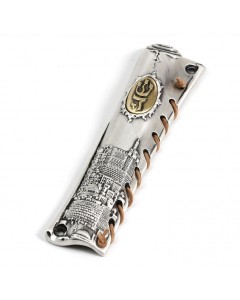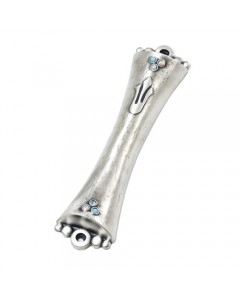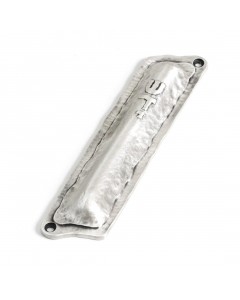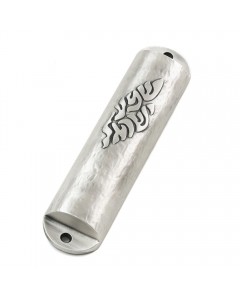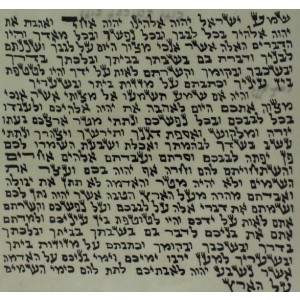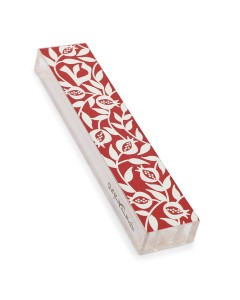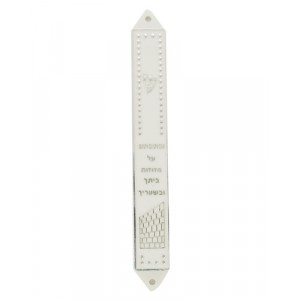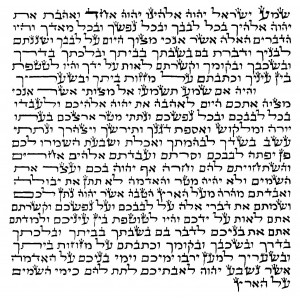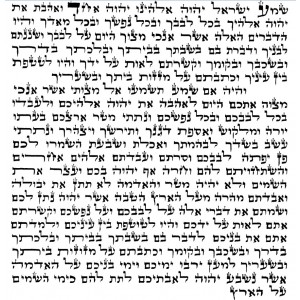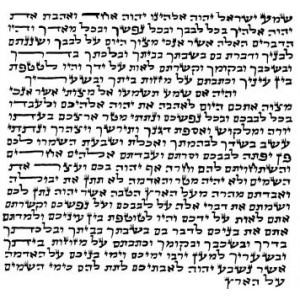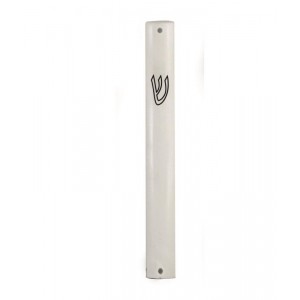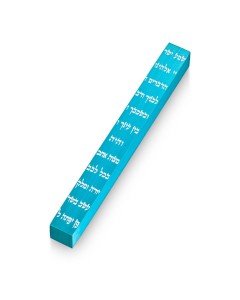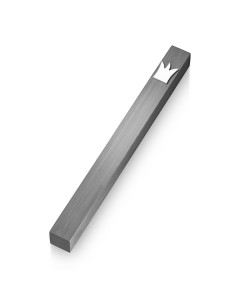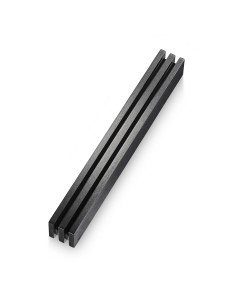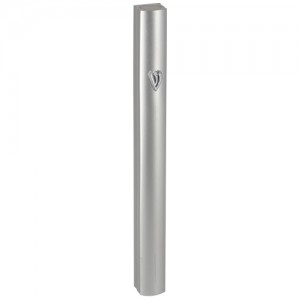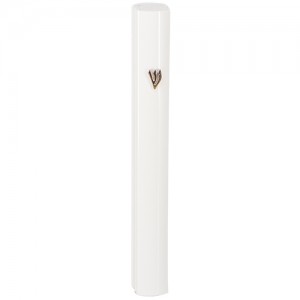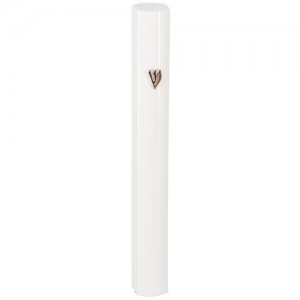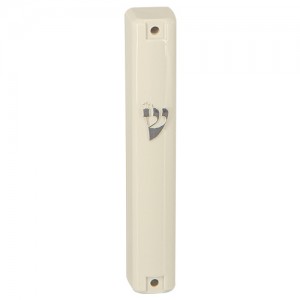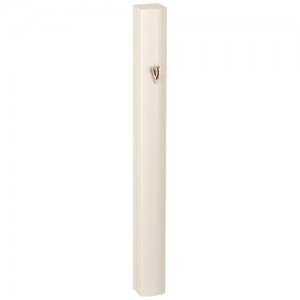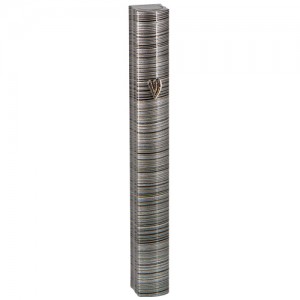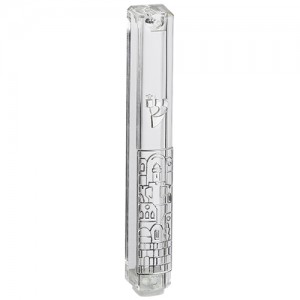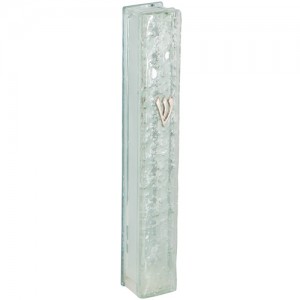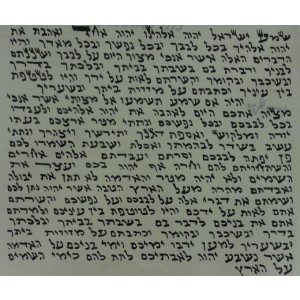One of the most popular mitzvot, mezuzah is the ancient tradition of affixing a scroll to all doorposts of the house in order to signify the covenant between God and the Jewish people. Written by a professional scribe on kosher parchment, mezuzahs (in Hebrew, mezuzot) are commonly kept in a special case in order to protect it from wear and tear.
Mezuzot
Mezuzá, en Hebreo significa “poste de la puerta”. Sin embargo, en el moderno Hebreo, así como en otros idiomas, es mayormente utilizado para referirse al rollo de pergamino cubierto que los Judíos cuelgan en el marco de la puerta, como la Torá explícitamente lo manda. Este pergamino contiene unos cuantos versos de la biblia que alaban a D-os y Su unidad y nos recuerdan acerca de los milagros que Él ha ejecutado por nosotros, como dividir el mar y otros eventos relacionados a la famosa historia del Éxodo. El rollo de la Mezuzá debe ser escrito por un escribano profesional y es puesto dentro de la caja de la mezuza, por lo que hay muchos tipos y estilos.
Guía de Mezuzot
One of the Judaica items that is used by all Jews regardless of their observance level is the Mezuzah. The hanging of a Mezuzah is a positive commandment that is mentioned in the Torah and is also the simplest way to identify a house as being owned by a Jew as the Mezuzah sits prominently on the interior and exterior doorposts of a house. The Mezuzah is mentioned in the Torah in several places, but appears specifically in the Books of Exodus and Deuteronomy.
¿Qué es una Mezuza?
The term Mezuzah actually refers to a doorpost but it now refers to the scroll that is placed inside of an ornament and hung on the upper right section of a doorpost. The scroll is a piece of parchment that has the text of the first two sections of the Shema - the Jewish Declaration of Faith – written on it. The Mezuzah cover, also known as a Mezuzah Case, holds the scroll and is affixed to a doorpost via two screws.
Materiales
Mezuzah cases can be made of almost any material imaginable, from plastic and wood to sterling silver, glass and even stone. Precious metals such as gold are usually not used in the body of a Mezuzah case because of their expensive nature and weaker composition in comparison to metals such as nickel and copper, but are frequently used as accenting pieces.
Decoraciones
Mezuzahs can be decorated with a massive range of themes, from traditional to modern. The one thing all Mezuzot share is a name of G-d that is represented by the Hebrew letters Shin, Daled and Yud and is typically abbreviated with the first letter, a Shin.
The most common traditional Judaica themes include views of Jerusalem, the Seven Species for fruit and grains that Israel is known for, Menorahs, floral patterns and Stars of David. Some less common but never the less popular designs include Kabbalistic writings. Mezuzahs may also be decorated with crystals or stones that are aligned in four rows of three stones in a replica of the Choshen, the breastplate the High Priest – or Kohen Gadol – wore when serving in the Temple. All of these designs somehow incorporate the Hebrew letter Shin, either by making it part of the design or overlaying it in some manner.
Mezuzahs can also be placed in cases that have non-traditional decorations as well. These cases are perfect for children beginning to learn about their heritage and are decorated with items that interest children such as building blocks, cars, butterflies, sports equipment and flowers, to name a few. These cases are usually brightly colored and have the same Shin, but it is usually stylized in some manner to be appropriate for a child.
Personalización
Mezuzahs are usually not personalized, although they may be engraved with a name. Some couples have the glass that was broken during their wedding ceremony – the Chuppah – melted down and reshaped into a Mezuzah.
Para más información
Para más información acerca de
Mezuzot,
Judaica, o
artículos de Sinagoga, con mucho gusto to
contacte a nuestros expertos en Judaica para que le respondan a cualquier duda o inquietud.


